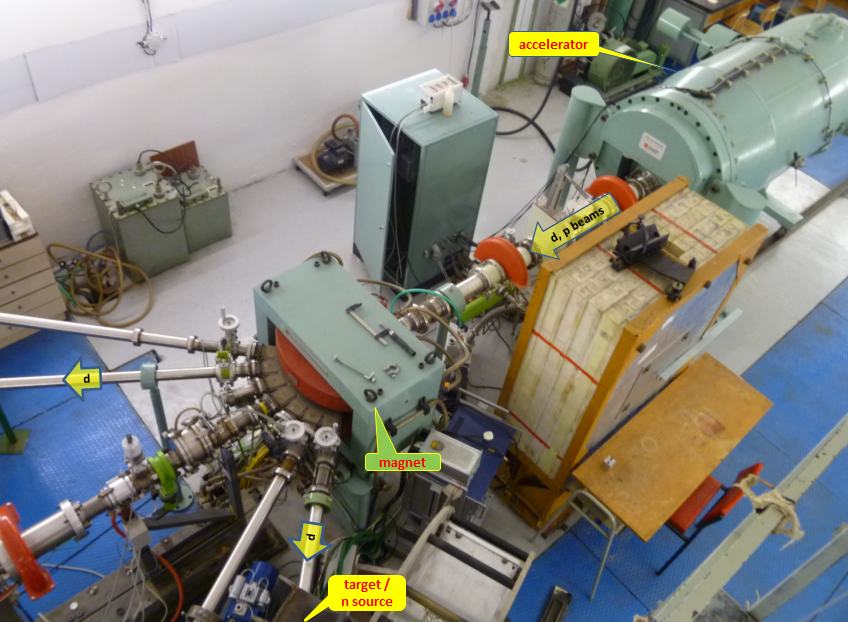Van de Graaff accelerator: light ion beams and quasi-monochromatic fast neutrons

The IEAP owns an electrostatic light ion accelerator Van de Graaf HV2500 (VdG) with maximum proton energy 2.5 MeV. Experiments are pursued in basic research such as on the interaction of polarized neutrons on polarized targets and nuclear reactions for astrophysics research. Applications are appropriate and the equipment is used for testing and calibration of detectors for different particles of different energies (protons, neutrons, alpha particles, etc.) and for surface analysis by RBS and PIXE (program with the FNSPE CTU in Prague). The scientific program of the accelerator laboratory focuses on experiments in the field of low energy nuclear physics as well as related applications in surface analysis and calibration and testing of new types of nuclear radiation detectors.
The accelerator is used mainly as a tunable source of heavy charged particles in the range of 300 - 2500keV and as a neutron source. The ability to produce fast neutrons in a relatively wide energy range using (d, t) and (d, d) reactions (up to 17 MeV) enables the laboratory to perform calibration and test measurements detectors as well as the study of their radiation resistance depending on the irradiation time . To that end, it is possible to use beams of charged particles (protons, deuterons, alpha particles, ...). Besides irradiations, experiments continue using the equipment for surface analysis of the structure of solids (methods PIGE, PIXE, RBS, etc.). In the laboratory it is possible to perform a number of other experimental projects (e.g. student), who are given opportunities to use the full extent of its facilities and equipment.
For details see the VdG lab website.

